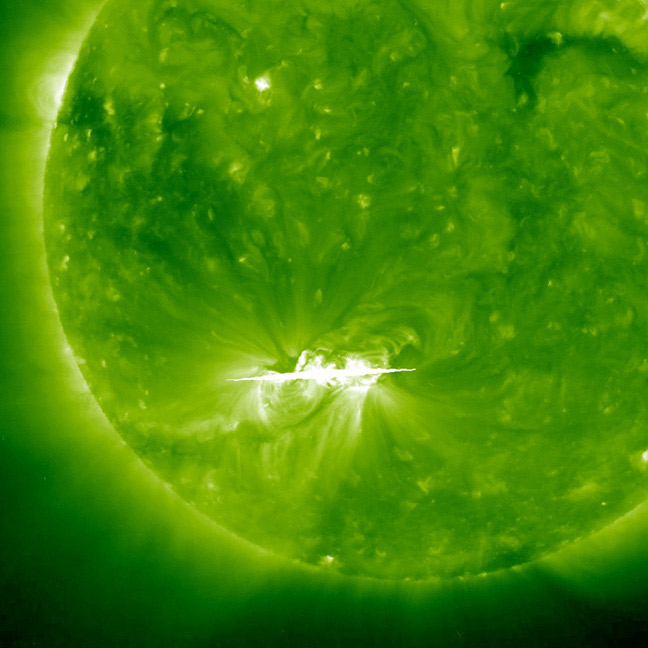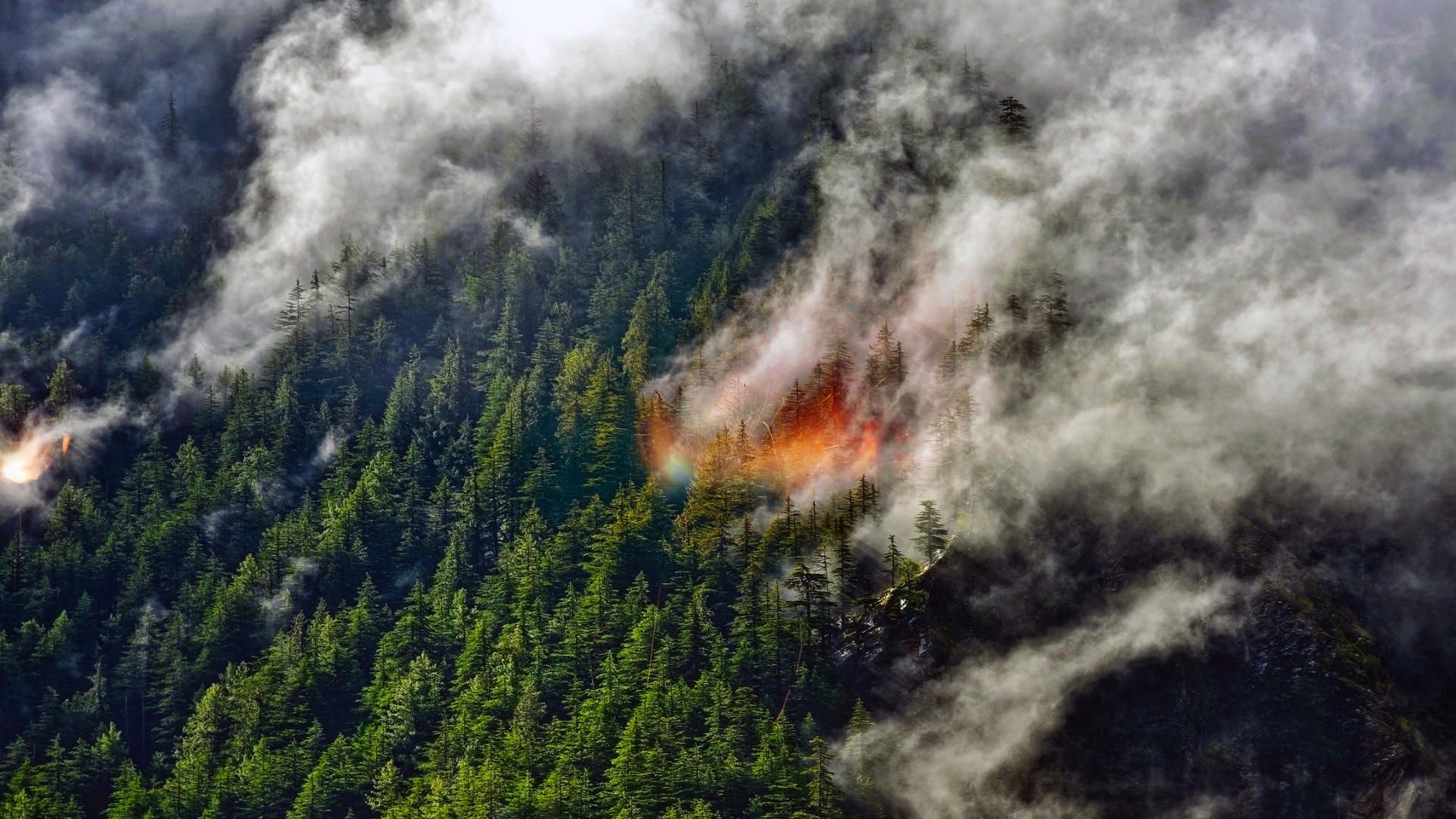Sun Unleashes Most Powerful Solar Flare in Years

Amajor solar flare erupted from the sun Saturday ? one of themost powerful in years ? sending an energetic blast of X-rays from a hotspotofactivity that may still belch more solar storms in the days to come.
TheX-ray blast occurred Nov. 6 at about 11:36 EDT (1536 GMT) froman active group of sunspots called 1121. It was the third major flarefrom thesolar hotspot and registered a Class M 5.4 on the scale for sunstorms,accordingto the Space Weather PredictionCenter operated by NOAA. [PhotoofSunspot Group 1121]
"Astronomerswho study the sun have five categories offlares: A, B, C, M and X," explained SPACE.com's skywatching columnistJoeRao. "The M and X flares are the most potent types and the one thaterupted [Saturday] was an M 5.4 which is just about the most powerfulflarewe've seen in many years."
Atthe time of the flare, sunspot group 1121 was on the limb, orthe edge, of the sun's disk, so any cloud of electrified particlesejected bythe flare would not reach Earth, Rao said.
"Butas the sun rotates, this active region of the sun willbe turned more and more toward the center of its disk ? it will bethere aroundNov. 12 to 13," Rao said. "If a similar M-class flare erupts aroundthat time, we could be in line to see a very nice display of northernlights aday or two later when the cloud of electrified solar particles reachesEarth."
Accordingto the website Spaceweather.com, which monitors spaceweather and sky events, the radiation from the solar flare "createda waveof ionization in Earth's upper atmosphere that altered the propagationoflow-frequency radio waves."
Severesolar flare events can cripplesatellites and pose a risk to astronauts in orbit, and also have thepotentialto knock out power grids on Earth. NASA recently began a project,called the SolarShield,to provideearly-warning alerts to electricity providers to help limit damage topowerutility infrastructure as a result of extremely powerful solar storms.
Breaking space news, the latest updates on rocket launches, skywatching events and more!
Thesun is currently entering an activeperiod of its 11-year solarweather cycleafter a lull inactivity.
- Gallery:Amazing SunPhotos
- Video- How SpaceStorms Wreak Havoc on Earth
- NASA'sSolar Shield to Protect Power Grids From Sun Storms

Tariq is the award-winning Editor-in-Chief of Space.com and joined the team in 2001. He covers human spaceflight, as well as skywatching and entertainment. He became Space.com's Editor-in-Chief in 2019. Before joining Space.com, Tariq was a staff reporter for The Los Angeles Times covering education and city beats in La Habra, Fullerton and Huntington Beach. He's a recipient of the 2022 Harry Kolcum Award for excellence in space reporting and the 2025 Space Pioneer Award from the National Space Society. He is an Eagle Scout and Space Camp alum with journalism degrees from the USC and NYU. You can find Tariq at Space.com and as the co-host to the This Week In Space podcast on the TWiT network. To see his latest project, you can follow Tariq on Twitter @tariqjmalik.
